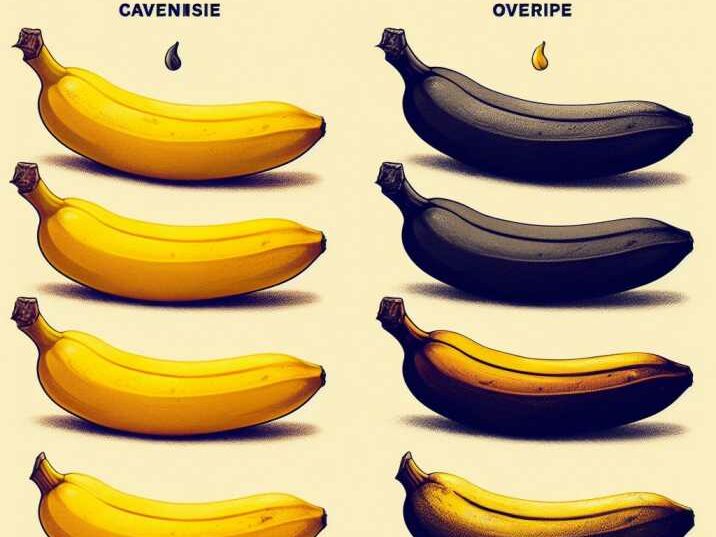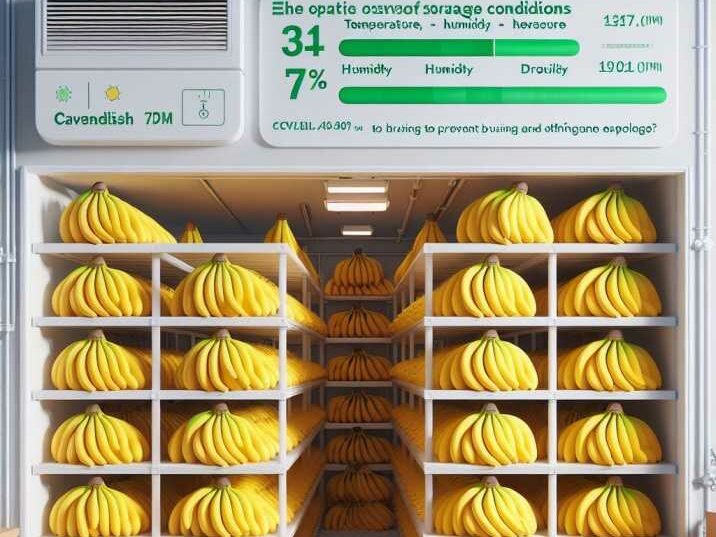Introduction:
Table of Contents
Cavendish bananas are a beloved fruit cherished for their delicious taste and nutritional benefits. However, keeping them fresh can sometimes be a challenge. Proper storage is key to prolonging the shelf life of cavendish bananas and ensuring they remain flavorful and ripe for longer periods. In this comprehensive guide, we’ll explore the optimal storage conditions and effective strategies to extend the shelf life of Cavendish bananas.

Understanding Cavendish Bananas:
Cavendish bananas are one of the most popular varieties of bananas globally. They are known for their elongated shape, bright yellow color when ripe, and sweet flavor. These bananas are rich in essential nutrients such as potassium, vitamin C, and vitamin B6, making them a nutritious snack choice for people of all ages.
Importance of Shelf Life of Cavendish Bananas:
Proper storage plays a crucial role in maintaining the quality and freshness of Cavendish bananas. Exposure to unfavorable conditions such as extreme temperatures, high humidity, or ethylene gas can accelerate ripening and lead to premature spoilage. By implementing the right storage practices, you can significantly extend the shelf life of these bananas and minimize food wastage.
Optimal Storage Conditions:
To maximize the shelf life of Cavendish bananas, it’s essential to create an environment that mimics their natural habitat. Here are the optimal storage conditions to follow:
1. Temperature:
Keep Cavendish bananas at a temperature range of 55-60°F. Avoid storing them in excessively cold temperatures, as this can cause chilling injury and lead to the development of dark spots on the peel.
2. Humidity:
Maintain a humidity level of 85-95% in the storage area. High humidity helps prevent moisture loss from the bananas, keeping them firm and fresh for a longer duration.
3. Ethylene Exposure:
Cavendish bananas are sensitive to ethylene gas, a natural plant hormone that triggers ripening. To slow down the ripening process, store bananas away from ethylene-producing fruits such as apples and tomatoes. Alternatively, you can use ethylene-absorbing products to minimize ethylene levels in the storage area.
Practical Tips for Storage:
In addition to controlling temperature, humidity, and ethylene exposure, here are some practical tips to prolong the shelf life of Cavendish bananas:
- Store bananas in a well-ventilated area: Proper air circulation helps prevent the accumulation of moisture around the bananas, reducing the risk of mold growth.
- Handle bananas with care: Avoid dropping or bruising the bananas, as damaged areas are more prone to spoilage.
- Separate bananas: To prevent one overripe banana from affecting others, store them individually or hang them on a banana hanger.

Conclusion:
By following the optimal storage conditions and practical tips outlined in this guide, you can prolong the shelf life of Cavendish bananas and enjoy fresh, delicious fruit for longer periods. Remember to maintain the right temperature, humidity, and ethylene exposure to preserve the quality and flavor of your bananas. With proper storage techniques, you can minimize food waste and make the most of this nutritious and versatile fruit.
Frequently Asked Questions (FAQs):
- How long do Cavendish bananas last in ideal storage conditions? Cavendish bananas can last up to two weeks or more when stored under optimal conditions.
- Can I refrigerate Cavendish bananas to extend their shelf life? Refrigeration is not recommended for unripe bananas, as it can cause them to turn black. However, refrigerating ripe bananas can slow down further ripening and extend their freshness for a few days.
- What should I do with overripe bananas? Overripe bananas are perfect for baking delicious treats such as banana bread, muffins, or pancakes. Alternatively, you can freeze them to use in smoothies or as a natural sweetener in recipes.
- Do bananas ripen faster in a fruit bowl with other fruits? Yes, bananas ripen faster when placed in close proximity to ethylene-producing fruits such as apples, tomatoes, and avocados.
- How can I tell if a Cavendish banana is ripe? A ripe Cavendish banana will have a bright yellow peel with a few brown speckles. It should feel slightly soft when gently squeezed.
